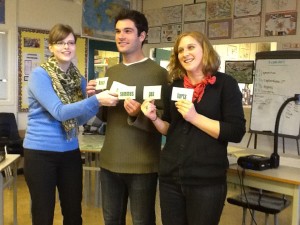In the last post you’ll notice that I discussed my research on the background and previous documentation concerning my question of inquiry. However, what kind of resources would I use to try and seek the answer? Here I will be talking about what I used to further my knowledge on what seemed to work for other teachers and researchers in creating the ability to administrate scaffolding and autonomy.

While thinking about my question I began to look into why teachers might find the skill of balancing autonomy and scaffolding within the classroom. I thought that in order to start somewhere I would have to look for the root of the problem, and one article helped me find that root. I was thinking that in order to really know where a student lies within their developmental ability one must establish a relationship with that student and really get to know them. This rule also applies for the rest of the students within the classroom in the sense that teachers must get to know each and everyone of their students in order to provide developmentally appropriate classes. This also helps create what is also known as a good classroom environment. Additionally, my cohort members and I have recently been learning that in order to have a good sense of classroom community the teacher must first acquire the necessary skills the implement good classroom management. However, even though skills regarding classroom management are essential to creating an effective class, Martin (2004) has recently discovered that “knowledge of classroom management has not developed concurrently with changing ideas of more active and socially interactive teaching and learning” (pg. 406). In other words, classroom management skills have been put on the shelf while classrooms are still changing and adapting and in need of new administrative strategies. Martin (2004) goes on in explaining that “they feel that ideas of effective classroom management have remained typically unchanged and [their] attempts to create a progressive curriculum reform have ‘created an oxymoron: a curriculum that urges problem solving and critical thinking and a management system that requires compliance and narrow obedience” (pg. 406). Therefor, as all the focus is being put on generating new and interactive curriculum, administrators are forgetting that in order to create the type of students that are confident enough to self-regulate and effectively use autonomy instructors need to be aware of how to properly manage that change.
Through my research I also found support from a website from the Centre for Spiritual and Ethical Education (CSEE). Here they show the relation between community and autonomy in saying that in order for “[students] to be happy, and flourish as part of a community, [they] must experience a reasonable amount of autonomy” (2007). Once again we see that autonomy and community are both linked to the success of the student. It has become evident to me that without community within a classroom the teacher has limited relations with his/her students, and therefor has troubles gaining perceptions of their developmental level. To continue on the importance of building a relationship with your students, Bergin & Bergin (2009) describe the effects of students gain a sense of attachment to their instructors through the development of a classroom community. “Attachment provides feelings of security, so that children can explore freely. While all children see k to feel secure, attachment helps them balance this need with innate motivation to explore their environment” (Bergin & Bergin, 2009). As the Bergins describe, you can see a definite side effect of classroom community and teacher-student relationships in allowing the student to gain a sense of self-motivation.
Lastly, I held a short interview with one of the teachers on staff at my practicum school to discuss what they thought about determining the proper amount of scaffolding and autonomy. Through listening and applying my own thoughts it definitely seems prevalent that teachers and students need to have a level of understanding between each other. It seems unwise that a teacher might administer autonomy freely within a class without directly knowing the characteristics and behaviour tendencies of those students.
I can safely say that my idea of community being used to combat the issue of the use of scaffolding and autonomy came directly from these sources. I believe that each of these articles and sources provide a wealth of knowledge that will help direct my own inquiry.
Photo Retrieved from: http://www.parmarglobalimpex.com/inquiry



